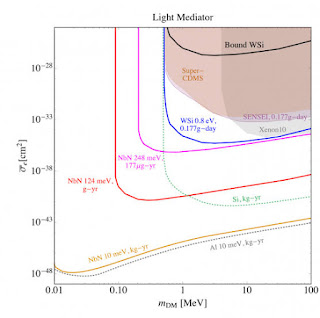Superconducting nanowires could be used to detect dark matter
One of the greatest scientific quests of our time is the hunt for dark matter. Physicists believe that it is the stuff that fills 85 percent of the entire matter present in our universe. They believe that it is responsible for the way galaxies rotate and uniformity in the velocities of stars across an entire galaxy is caused by a hidden driving force that they call dark matter.
Indeed, galaxies spin so quickly that they ought to fly apart unless some hidden mass is generating enough gravitational pull to keep them intact.
This has set the researchers to find the evidence of dark matter. And hence they have constructed dozens of observatories. Most of them are underground, situated deep beneath the surface, where there is almost no background noise. The team that detects it first is likely to be richly rewarded and will get a huge scientific fortune and fame.
However, unfortunately no one has been able to find anything at all and the dark matter seems to be very well hidden till now. Perhaps, they have been looking in the wrong place or in a wrong way.
One of the reasons behind this may be that, the dark matter particles are too small for our current instruments to detect. Hence, physicists are searching for ways to develop more sensitive machines to detect these mysterious things.
Yonit Hochberg at Hebrew University of Jerusalem in Israel and a few colleagues have developed promising new device with sensors based on tiny superconducting wires. The team's prototype is already showing the potential of this approach.
The principle behind this new device is straight forward. Cool certain metals below a critical temperature and they become superconductors which have almost no resistance. But, as soon as their temperature rises above this threshold, the superconducting nature gradually disappears.
Physicists know for sure that dark matter particles can't interact strongly with ordinary matter; else they would have already seen them. But dark matter particles can collide head-on with ordinary matter.
However, these collisions are rare because ordinary matter is almost empty space, which makes the dark matter particles pass straight through them. The collisions take place only when they hit atomic nucleus or electrons in a lattice. These collisions cause the lattice to vibrate, thereby raising its temperature.
Superconducting nanowires are good at revealing these slight increases in temperature. The heating causes a small portion of the wire to stop superconducting, and this in turn creates a voltage pulse that is easy to measure. Another positive aspect of this device is that it produces very few false positives.
Hochberg and her team has put their idea by building a prototype. This device consist of a set of tungsten silicide nanowires just 140 nanometers wide (a human hair is 100,000 nanometers wide) and 400 micrometers long. The entire apparatus sits just few millidegrees above absolute zero, which makes the tungsten silicide wires behave as superconductors.
Using this device, the team looked for voltage pulses that might reveal a dark matter collision. With appropriate shielding in place, they found no pulses during 10,000-second duration of their measurements.
That places important constraints on the type of dark matter that could be present and its density. It also places constraints on other type of particles that physicists speculate might exist.
One of these are called "dark photons" - essentially the dark matter equivalent of ordinary photons. If they exist, the new device didn't detect a single one. "The results from this device already place meaningful bounds on dark matter - electron interactions, including the sub-eV dark photon absorption to date", say Hochberg and Co.
The team's work is quite impressive, considering that the mass of the nanowires is just a few nanograms. The next stage is to fabricate and implement them on a large scale. Hochberg and Co say that the technology is relatively mature, so this should be possible on a short time scale.
Indeed, they estimate that an academic lab could churn out a thousand 200-nanometer detectors with a total mass of 1.3 grams in just a year. "An industrial effort could realize many times that number", they pointed out.
So, a kilogram-scale detector could be feasible in the not too distant future. Such a machine would rival those already in operation, but it would look at different energies in different way.
So, maybe one day, these superconducting nanowires shall be able to discover dark matter - if it exists at all.
Ref: arxiv.org/abs/1903.05101 : Detecting Dark Matter with Superconducting Nanowires






















No comments: